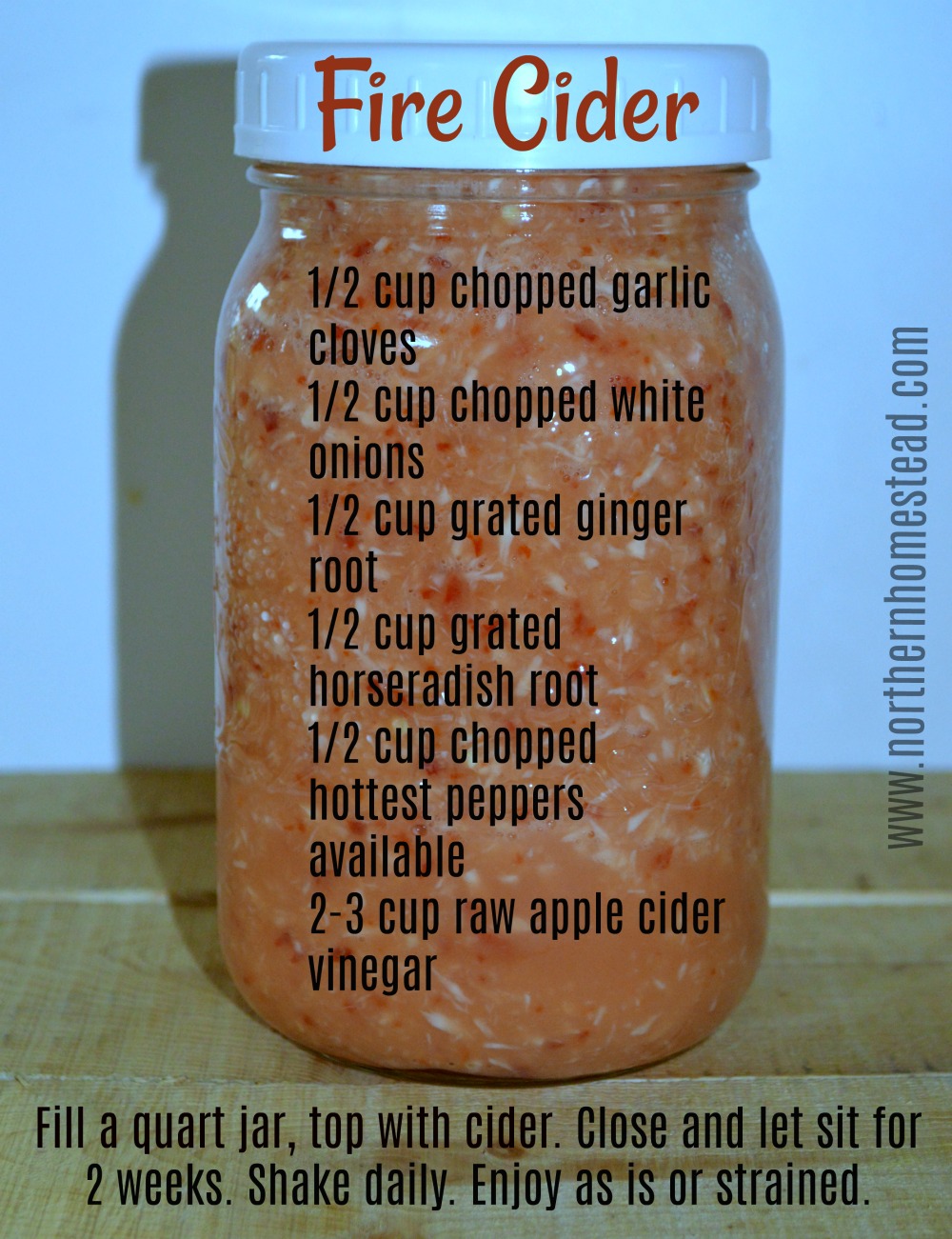
We have been making homemade fire cider for many years using basically the same simple recipe. However, I have never shared it on this blog. If you follow us on social media, you probably have seen it many times. Every fall it goes around. It’s time to share it here also.
What is fire cider

If you are not familiar with fire cider, you might be wondering what in the world is that. Basically, it’s raw apple cider packed full of spicy goodness and fermented. The end result is spicy hot tonic, hence the name, fire cider.
However, it isn’t all that simple with the name. It has been to court fighting for trademarking. I use it here very loosely as a homemade recipe that we use. We have no claims for it being in any way original, or The recipe.
In fact, there are so many variations of fire cider around, that it might be hard to choose a favorite. We love this recipe because of its simplicity. As you know, we like things simple. Almost everything in it is homegrown or can be homegrown. It tastes good (if you like things spicy), and all can be used, no leftovers. A win-win.
True to “Let food be thy medicine, and let medicine be thy food.” All that goes into the Fire Cider is food, and it can be used in food, that’s what we do with the pulp, see below. The tonic is used as a herbal remedy.
Homemade Fire Cider Recipe
- ½ cup chopped garlic
- ½ cup chopped onions
- ½ cup grated ginger
- ½ cup grated horseradish
- ½ cup hot peppers
- 2-3 cup raw apple cider vinegar
- Combine all ingredients in a quart jar
- Top with apple cider till full
- Close and let sit away from direct sunlight for two weeks
- Give it a shake daily
- Strained and use
To chop or grate all the ingredients we have used two different techniques. Both work. By the way, doing it by hand would work too. But if you have a food processor or a blender, it is much faster and easier.
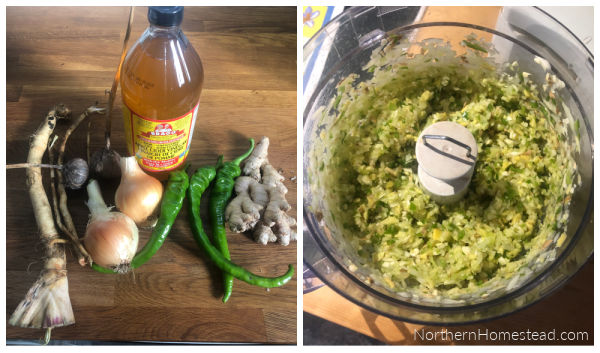 Usually, I have been using the food processor. After peeling and cleaning the veggies and roots, I would add everything into the food processor and chop away.
Usually, I have been using the food processor. After peeling and cleaning the veggies and roots, I would add everything into the food processor and chop away.
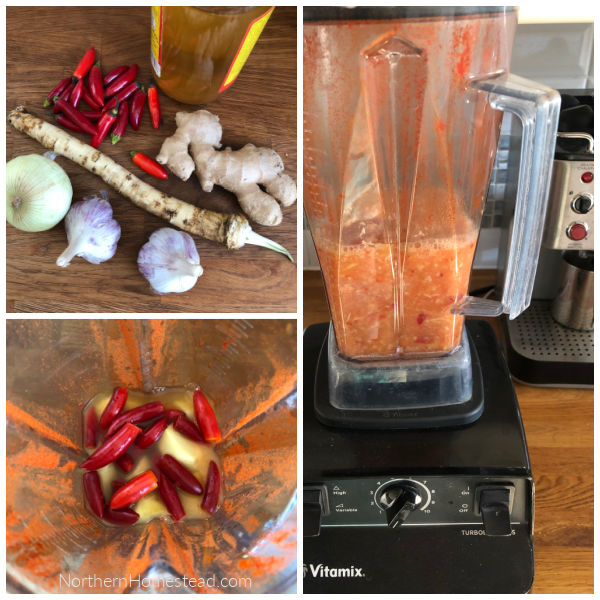
This year I decided to try the Vitamix Blender instead. It was even simpler. Since we are adding liquid anyways, I added some cider and processed it at the variable speed at 4. It really only takes seconds. If you have a blender, try it, it might be your favorite way too.
By the way, if you wonder why my container looks so red, it’s because I made hot pepper powder prior to the cider, and since both are hot, I didn’t see a reason to rinse the container in between. It has nothing to do with this recipe though. Just keeping things real here.
You can also see that red hot peppers make the fire cider red, green, make it plainer looking. There is no difference in taste or benefits though. It’s just what is available in our garden any given year.
Variations in the recipe
As I mentioned before, there are many fire cider recipes around. Adding herbs, lemon, and even honey is common.
Rosemary and turmeric are probably the most common ones. If there is a herb or root that you find particularly healthy and good, add it. You can hardly go wrong, as long as you use things you would use in other recipes as well.
Using the pulp
We like to strain the fire cider. It’s just easier and more pleasant to use, we find. It also keeps better that way. The pulp however is full of goodness.
After straining all the cider out, hang or lay the pulp out to dry.
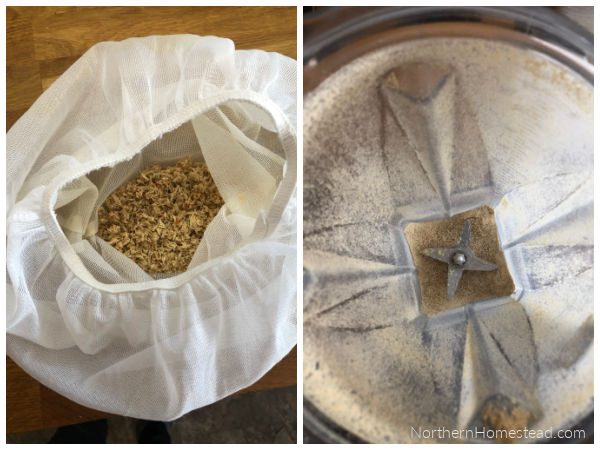
After it is completely dry, it can be made into a powder to use as a spice in soups or sauces. It’s also tasty in refried beans or anywhere you like a bit of spiciness.
Use the fire cider and storage
We use the fire cider whenever we feel a bit under the weather, or if we have been around people who are not well, or even after a heavy meal to help with digestion. It’s just a feel-good tonic for us, warming the body, especially good for the upper respiratory system.
We take a spoon full of the cider as is, and then finish it with a bit of honey to soften it up. Some suggest adding honey to the cider, we have never done that. It does not seem to be logical to me since honey is anti-bacterial, and fire cider has beneficial bacteria in it. We keep the two separate.
We store the fire cider in the fridge, however, I hear it is shelf-stable. It lasts well for a year, probably longer, but since we make it every fall, for us it does not have to last longer.
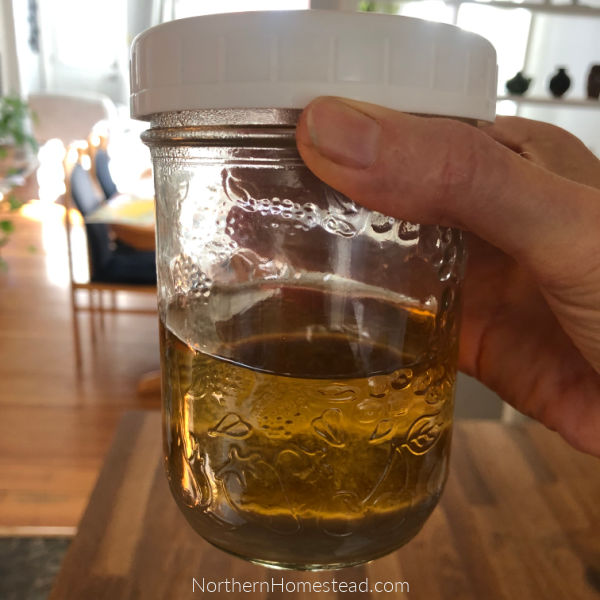
Here I have in my hand last year’s jar. You see that the mother, the cloudy and murky appearance at the bottom is still in, just like with raw apple cider.
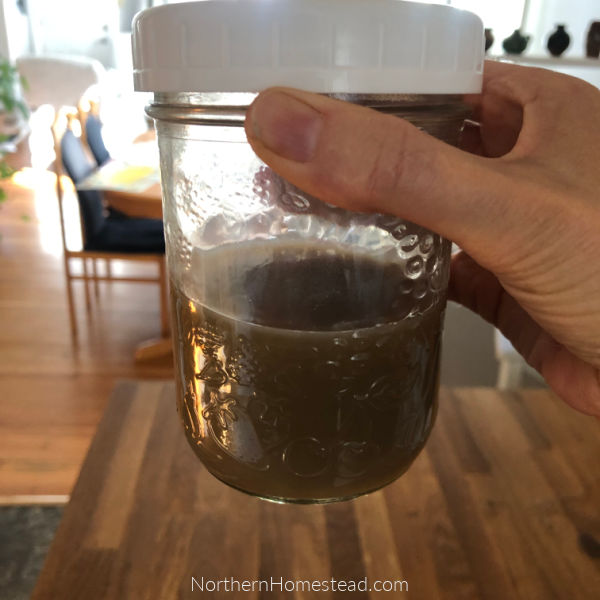
If I shake it, it becomes brownish, muddy. If you want to use all that goodness, shake before each use. It sure looks more appetizing without shaking, but then you miss out on some of the goodness.
Making homemade fire cider is simple. Make a batch and see how you like it. Maybe it will become an annual recipe.
Stay healthy and happy!
We invite you to subscribe to Northern Homestead and follow us on Facebook, Instagram, or Pinterest for more great recipes.





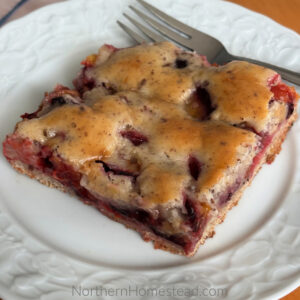
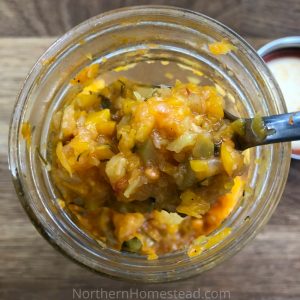

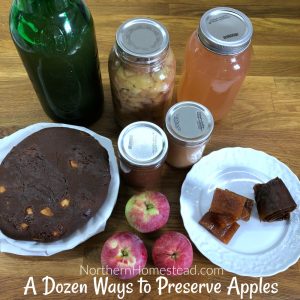
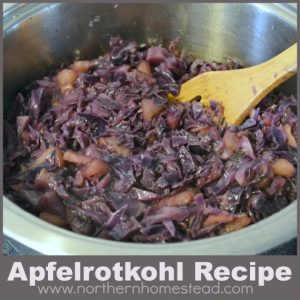


I love that herbalists in the USA won the case against the company that was trying to trademark the words fire cider!
I’m wondering if apple scrap cider could be used instead of apple cider vinegar. I’ve just made my first batch of apple scrap vinegar and will be straining it this week.
I really enjoy your blog and find it very informative and inspiring! Thank you for everything you post.
Thank you for your kind words. ACV is 5% vinegar, your homemade scrap cider vinegar is most likely less than that. So it would not be safe in canning. However, I don’t see a reason why it would not be good in fire cider, except that maybe (and really just maybe) it would not last as long, again, since it is not as acidic.
Anna, I made this for the first time this year.Your clear instructions gave me confidence to do it. Now I want to grow my own horseradish, but am uncertain where to plant it. Everything I read about it says it’s invasive. I had some old Sicilian friends who planted it in a no-man’s-land strip on the side of their house, where it happily formed larger and larger clumps each year. Where do you tuck yours into your garden?
Also, I tried to dry it down as you suggested (brilliant!), but my husband simply could not bear the odor. Do you have any thots on how to dry it while minimizing the smell? Do you think I could do try oven drying so I could accelerate the process while my dh is at work? A friend told me she freezes the bits, but I am always trying to limit how much I add to the freezer.
I want to share that I felt to use this after a heavy holiday meal that started to congest my sinuses. One tbsp of this and my sinuses cleared and I felt right as rain next morning. Thank you for all you share!!
Oh the smell! Yes, it is intense when drying. I used a corner in our basement behind the furnace at an open window. Once it is dry, the smell is not as strong and can be used easily. Freezing is an option, by I would be careful that it does not leach into the freezer. If you can hang it in a bag outside, that would be an option too.